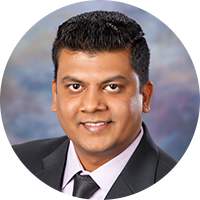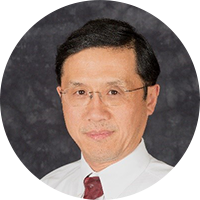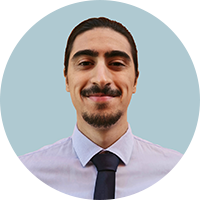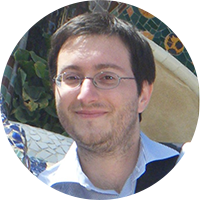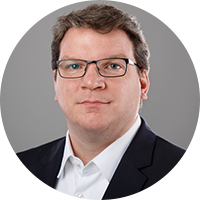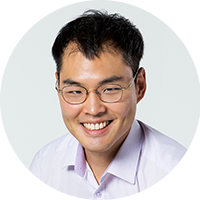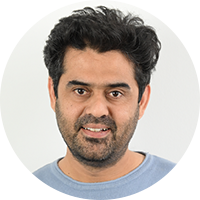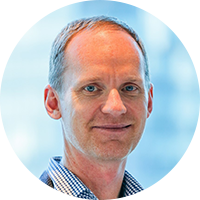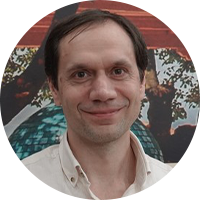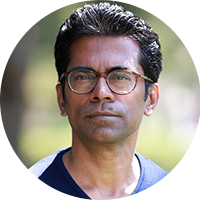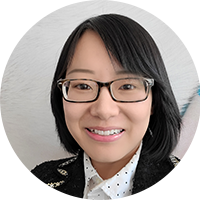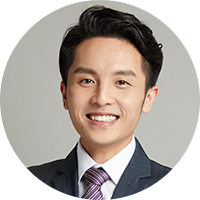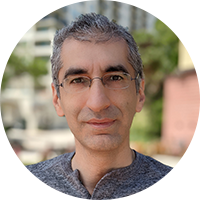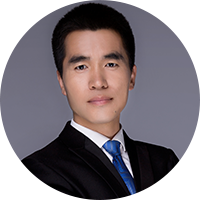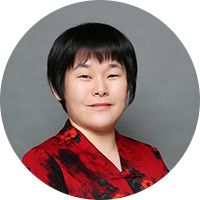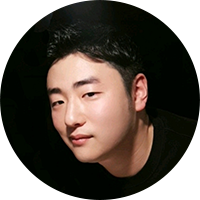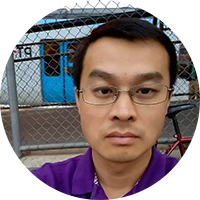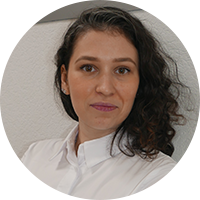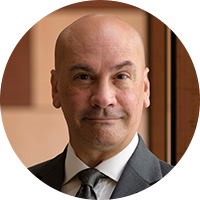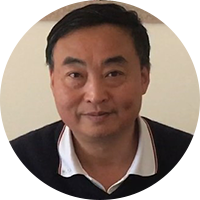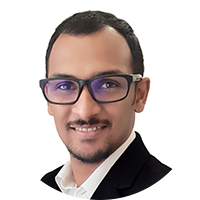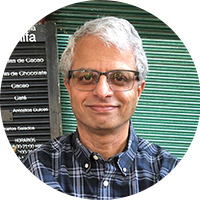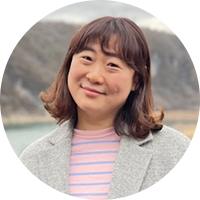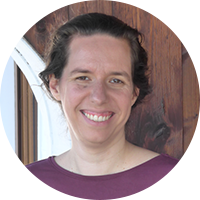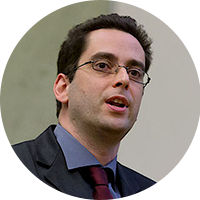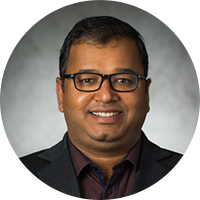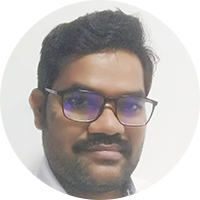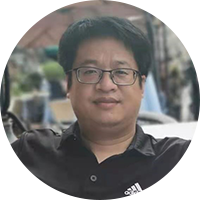SIMULIA Champions 2021
Meet our SIMULIA 2021 Champions
Advait Bhat
Principal Engineer, Pepsico
Advait joined PepsiCo in 2016 as a packaging structural engineer and a simulation analyst in the Discovery and Applications team within Global Beverage R&D. He is now a Principal Engineer in the newly formed Innovation, Design and Technology group leading the efforts on advanced simulation capabilities and Digital Twin applications. He has contributed on package development of many successful beverage brands such as Life WTR, Tropicana, Aquafina, Lipton, Gatorade and Gatorade GX.
Advait holds a PhD degree in Mechanical and Aerospace Engineering from Oklahoma State University with technical interests in structural analysis methods, optimization and light-weighting strategies.
Advait enjoys scouting advancements in rapid prototyping in efforts to bring his digital creations to life while exploring avenues of conducting hybrid analysis to improve speed to market. In his spare time, he enjoys playing soccer and watching science fiction shows.
Allan Zhong
Distinguished Scientist, Halliburton
Allan Zhong is the Halliburton Distinguished Scientist. Halliburton, a strategic and visionary technology leader with broad engineering/research experience and proven track record to drive innovation and new product development, delivers results with commercial impact. Zhong has 7 issued/15 pending US patents and has published 64 technical papers. Prior to Halliburton, Allan worked at Goodyear Tire and Rubber Company where he developed an industry leading fracture mechanics-based truck tire durability model. He is a Fellow of American Society of Mechanical Engineers (ASME) and member of Society of Petroleum Engineer (SPE). He earned a Ph.D. in applied mechanics from California Institute of Technology.
Amine Amimi
Development Engineer, Tetra Pak Packaging Solutions
Amine Amimi is working as a Development Engineer in the equipment engineering division at Tetra Pak where he supports the development of new products and solutions in the food packaging industry by performing thermal and structural FE analyses of processes and components.
Amine joined Tetra Pak in 2015 after graduating from the University of Trento in the same year with a Master’s degree in Material Science and Engineering.
Amine’s first approach to simulation methods and tools started 10 years ago in the molecular dynamics field through the development of atomistic models used to predict and study X-ray diffraction patterns of novel materials. He later moved to the structural finite element field in which he’s still an extensive user of SIMULIA’s applications, mainly involving ABAQUS and ISIGHT.
His current research interests are in the latest and innovative approaches to modelling and simulation relying on data-driven and machine-learning methods which have deeply fascinated him in the last years.
Andrea Giampieri
Development Engineer, Tetra Pak Packaging Solutions
I graduated at Politecnico of Milan, where I achieved also a Ph.D. in Structural, Earthquake and Geotechnical Engineering. My thesis was on the modeling of the forming technologies employed by Tetra Pak in its liquid food packaging business, so it has been natural for me to join the company when I left the academia in 2010. During my studies I grew a strong interest for FEM and numerical methods, especially in the field of shell modelling. I collaborated to the implementation of the nonlinear shell model in the commercial solver Xfinest. The project I loved the most was the collaboration with MOX department in Milan for the modelling of the Wind – Sail FS Interaction. Since 2010 I am a Development Engineer in Tetra Pak, my job focusing on the numerical modeling of complex packaging material – machine - product interactions. My daily work as analyst in R&D revolves around the use of Abaqus, the software I first met as a student at university and on which I have grown most of my experience.
My hobbies are photography and board games.
Andreas K. Bitz
Professor of Electromagnetic Theory & Applied Mathematics, University of Applied Sciences
Andreas K. Bitz is Professor of Electromagnetic Theory and Applied Mathematics in the Department of Electrical Engineering and Information Technology at FH Aachen - University of Applied Sciences, Aachen, Germany.
Andreas Bitz received the Ph.D. (Dr.-Ing.) in electrical engineering from the University of Wuppertal, Germany. He worked as a post-doctoral fellow at the Erwin L. Hahn Institute for MRI, Essen, Germany, and in the Division of Medical Physics in Radiology at the German Cancer Research Center (DKFZ) in Heidelberg, Germany.
His research activities include applied and computational electrodynamics for safety and effectiveness evaluations of medical devices as well as safety of humans in electromagnetic fields. For almost 25 years, Andreas Bitz is using CST Studio Suite for electromagnetic and bioheat transfer simulations, often by employing high-performance computing and user-defined post-processing routines.
He is working in collaboration with partners from academia and industry in the field of ultra-high field magnetic resonance imaging, with focus on MRI safety, implant safety and compliance testing of multi-channel RF coil arrays including experimental validation of numerical results.
He is teaching undergraduate and graduate courses in Electromagnetic Modelling and Simulation as well as Electromagnetic Field Theory where students utilize CST Studio Suite to analyze the characteristics of electromagnetic fields in basic and complex geometries.
Aram Kim
Senior Researcher, PSK
Aram Kim received his bachelor’s degree in electrical engineering and master’s degree in plasma electronics (with specialization in plasma diagnostics) from Hanyang University. At PSK he is responsible for designing plasma chambers used in semiconductor (DRAM, Flash, and Logic) manufacturing.
He has 8 years of experience in plasma chamber design and 4 years of experience using the CST Studio Suite. He has designed more than five plasma chambers using CST. He presented the method of analyzing plasma chamber using CST at the ‘3D EXPERIENCE Virtual Conference’ (held in Korea) last year.
His current focus and passion is in the application of electromagnetic simulation techniques for plasma diagnostics.
Arshad Mehmood
RF Engineering Team Lead, Alcan Systems
I am RF Engineering Team lead at ALCAN Systems GmbH where we work on developing phased array antennas using Liquid Crystal technology. Phased arrays are considered the pinnacle of antenna engineering because they are challenging theoretically, numerically and practically. In other words, from first concept to simulations to prototyping, phased array antennas require tremendous attention to detail. For proper design, a lot of simulations of smaller components are required which need to be combined afterwards. CST, with its suite of different solvers, provides a lot of flexibility to the design engineer. Different solvers are also extremely useful for convergence and sanity checks.
I hold a Bachelor of Science degree from COMSATS University Abbottabad Pakistan, Master of Science and PhD degrees from Technical University of Darmstadt. It was during my PhD studies back in 2011 when I started working with CST. My research topic was Dielectric Resonator Antennas for which I used CST's TD and FD solvers extensively. Today at ALCAN, I still spend all my day in front of CST. The ever-expanding features in every release from CST aids in handling the complex simulations. For example the Schematic features, have also begun to play a critical role in our design because they simplify complex system simulations.
RF/Microwave components and systems of today are so complex that designing them with pen and paper is nearly impossible. That is why tools like CST Microwave Studio are indispensable not only for practicing RF/Microwave and Antenna engineers like ourselves, but also for students to grasp intricacies of Electromagnetism by providing valuable insights. This intuition and understanding is key to becoming a great at RF/Microwave design, which is not called black magic for no reason.
I look forward to helping others while also advancing my knowledge in the Simulia/CST community platform.
David Scholtz
Senior Principal Subsea Systems Engineer, Worley Offshore Energy
David Scholtz is a practical engineer with a vast array of Abaqus FEA experience from which to draw from when undertaking engineering activities in a consultancy role. He takes great pleasure in being part of projects and providing FEA support whether the analysis is design-focused or relates to operational issues and integrity support through asset life. David has done advanced FEA across many industries such as Resources and Energy, Marine and Automotive. This has also been done while working in different regions such as Europe, Africa and Asia Pacific.
Dmitry Grenishen
Team Leader of CAE Group, JSC Kamaz
Dmitry has been doing Finite element analysis for the last 25 years, of which 15 years have been using SIMULIA products – Abaqus, Isight, FeSafe, Tosca and xFlow.
He has a Master of Science degree in Laser Physics. For the last 10 years, Dmitry has been leading the group dealing with various types of CAE tasks in the KAMAZ company. The main direction of tasks for him is crash tests, passive safety, aero and hydrodynamics associated with a car.
Over the past 3 years, more than 20 crash tests of trucks and large city buses have been performed. Currently, Dmitry is optimizing the design of new urban electric buses to achieve weight savings and improve safety.
His favorite pastime is solving complex engineering problems that many people prefer to give up.
Dr. Ravish Masti
Staff PE Consultant, Borgwarner Inc
Dr. Ravish Masti is a Senior Staff Engineer with BorgWarner Inc., an industry leading company in providing clean, energy-efficient propulsion system solutions for combustion, hybrid and electric vehicles. He has an overall 23+ years of global work experience that entailed him with key performance roles and achievements in product innovation and development.
He is a protagonist of simulation-driven engineering design methodologies and is an active user of Dassault Systèmes - SIMULIA products for over 16 years. He has been extensively using SIMULIA products in various stages of product life cycle right from design conceptualization to on-field applications. He relies on SIMULIA products in attaining robust and optimal design solutions for structural strength and durability, vibration and acoustic response behavior, thermal management, electrostatic performance, etc.
Dr. Masti holds SIMULIA products in high regard for their technical maturity and versatility and the SIMULIA staff for their excellent customer support.
Ellie Vineyard
Modeling & Simulation Analyst, Pepsico
Ellie received her Ph.D. degree in Mechanical Engineering from Southern Methodist University. Her research focuses on metamaterial design and analyses using engineering intuition and topology optimization using the level set method combined meshfree or finite element methods. She has published up to 10 research scientific papers and earned Outstanding Graduate Student Award from Lyle School of Engineering in 2018.
Ellie has extensive experience with SIMULIA, especially in Abaqus, starting from her master thesis of modeling welding residual stress using Abaqus incorporating FORTRAN SUBROUTINES. After joining PepsiCo, she has contributed to PepsiCo internal Modeling and Simulation capabilities to support global beverage packaging development projects. With a passion in simulation automation and democratization, Ellie has initiated beverage packaging virtual test lab which will enable and empower non-CAE personnel to efficiently utilize the digital tool on their day-to-day work.
Fenghan Lin
Assistant Professor, Shanghai Tech University
Dr. Fenghan Lin is an assistant professor with the School of Information Science and Technology (SIST) at ShanghaiTech University, China. He received his B.Eng and M.Eng degrees from Xidian University in 2011 and 2014, and a Ph.D degree from National University of Singapore in 2019, respectively, all in EE. His research interests include Applied Electromagnetic Metmaterials, Antennas and AI-in-EM. He serves as a regular reviewer for international peer-reviewed journals (e.g. IEEE TransAP/MTT), a convened session chair at EuCAP 2021 (Germany) and a member of the IEEE APS education committee. He was awarded the 2017 CST University Publication Award, NUS President’s Graduate Fellowship, 2018 IEEE Singapore AP/MTT Joint Chapter Best Student Paper Award (twice), 2015 IEEE APCAP Student Paper Award and the 2018 Chinese Government Award for Outstanding Self-financed Students Abroad. Dr. Lin teaches two courses at ShanghaiTech, including Electromagnetics for undergraduates and Antenna Theory and Design for all levels, where CST MWS is the designated tool for student projects.
Giorgi Goga Bit-Babik
DMTS R&D, Motorola Solutions
Giorgi (Goga) Bit-Babik is a Distinguished Member of Technical Staff and a Master Innovator at Motorola Solutions where he spent over 20 years working in antenna R&D and compliance of exposure to electromagnetic energy. Prior to joining Motorola, he conducted research in applied electrodynamics at his alma mater, Tbilisi State University, Georgia, where he also did his Ph.D., on numerical methods in EM wave scattering. He has co-authored 20 peer reviewed and over 75 conference papers and holds 30 US patents.
Goga is an active member of the IEEE ICES TC34 and IEC TC106 international standards committees on electromagnetic field assessment associated with human exposure. He was instrumental in developing the first numerical standard on simulations of exposure from mobile radio antennas and is a recipient of IEEE Standards Association’s International Award and IEC 1906 Award.
In his work, Goga extensively uses various computational methods and simulation tools, including CST Microwave Studio, to help design antennas for portable mission critical radios and gain valuable insight in complex interactions between the human body and the EM fields emitted by antennas in close proximity.
Guiqiang Liang
Cutting Simulation Specialist, Beijing Linghang Kegeong Education Science & Technology Company Co., LTD
Guiqiang Liang is the founder of Linghang Kegong Co.,Ltd., the only company in China who takes cutting simulation as the core technology. Dr.Liang worked intensely in the cutting simulation industry for many years. He initiated and co-organized the International Conference on Cutting Simulation with Tsinghua University. This is important to position cutting simulation technology in university teaching, strengthen scientific research and cultivate top-level talents of cutting simulation for many well-known universities in China such as Tsinghua University, Beijing University of Aeronautics and Astronautics and Harbin Institute of Technology. Dr. Liang understands specific application scenarios of enterprises and provides cutting simulation technical support and process optimization solutions for military and cutting tool enterprises, which has been unanimously recognized and praised by experts in the industry. By promoting technology and the concept of cutting simulation, he has laid a foundation for the process digitization and information construction of enterprises and promoted the industrialization application of cutting simulation technology in China.
Jinfeng Cao
Associate Professor, Qingdao University of Technology
Jinfeng Cao has a PhD from China University of Mining and Technology-Beijing from 2007, with more than 16 years of experience using Abaqus. Cao has worked in Qingdao University of Technology since 2007 and is an active advocate of simulation in the mechanical and automotive industry.
Jinfeng has extensive experience with SIMULIA, in particular Abaqus which started while she was working on her bachelor’s degree. She has published four books on Abaqus and Python and owns Mechanis_Abaqus, a public account on WeChat, with about 5,000 followers. More than 30,000 people per year read the SIMULIA articles that Jinfeng presents on Mechanis_Abaqus. Jinfeng established an Abaqus Training Center in Qingdao in 2009, aimed to train students and engineers on Abaqus/CAE and SIMULIA Products. The center has trained more than 1,000 students. She has also recorded more than 120 hours of instruction videos with more than 12,000 clicks.
In her spare time, Cao likes to improve her own technical skills and experiences by teaching others and answering questions on the simulation CAE forum called fangzhenxiu.
Juhwan Lee
Senior Research Engineer, Hyundai Motor Group
Juhwan Lee is currently a senior engineer at Hyundai Motor Company. He analyzed the durability, NVH, MBD of the internal combustion engines for 8 years after joining Hyundai motor group. Now, he is responsible for NVH and Multibody dynamics of electric drive unit.
After joining Hyundai Motor Company, Juhwan selected ABAQUS and SIMPACK as his preferred simulation tool for structure analysis and multibidy dynamics. His group has continued to implement new methods in area of MBD, NVH and system modeling by helping to improve product quality and time development
Kai Long
Associate Professor, North China Electric Power University
Since 2010, Kai Long has worked as Lecturer/Associate Professor at the School of New Energy, North China Electric Power University in Beijing, China. Kai received his Ph.d degree from Beijing Institute of Technology in 2007. From there, Kai worked part time as TOSCA Structure technical support. He did his postdoctoral research at the Beijing Institute of Technology until 2010. From 2015 to 2016, Kai did more research at RMIT University as a visiting scholar in Melbourne. Kai has experience with Abaqus, Ansys, Nastran, TOSCA Structure, Hyperworks and Matlab. He has had more than 20 SCI papers published in high-ranking Journals. He is also familiar with Topology optimization theory and methods, especially SIMP method and ESO method.
Maria Grol
Project Leader, LLC LMTI UC Rusal
Maria graduated from Bauman Moscow State Technical University with specialization in aircraft and rocket engines. She has more than six years of experience in the area of strength and dynamics of jet engine parts and assemblies simulations, mainly hot parts: statics, dynamics, writing and adapting material models, life prediction models, using optimization approaches, such are topology optimization and DOE.
Now she is the project leader of the Department of Additive Technologies at LMTI UC RUSAL. Her main activities are focused on modification of parts and assemblies from various industries, simulation of printing process, improvement of simulation models for selective laser melting process. All of these activities, from design and parameterization to assessment of manufacturability and product lifecycle, are carried out in a single environment – 3DExperience.
Pablo Zavattieri
Jerry M. & Lynda T. Engelhardt Professor in Civil Engineering, Purdue University
Pablo Zavattieri is a professor in Civil Engineering at Purdue University. While he has a BS degree in Nuclear Engineering, a PhD in Aeronautics and Astronautics, almost 9 years of experience in the automotive experience and was previously a professor in Mechanical Engineering, his research interest lies at the intersection of solid/structural mechanics and materials engineering applied to the multiscale design and analysis of advanced materials, such as smart, architected/metamaterials, biological and bioinspired materials for a myriad of applications ranging from biomedical devices, automotive/aerospace structure to earthquake engineering. He combines state-of-the-art computational techniques (including FE using Abaqus) and experiments to understand and characterize key mechanisms that contribute to material performance; thus, enabling design guidelines for novel materials. He teaches introductory courses in mechanics of materials for undergraduate students where he introduces Finite Element as a tool to analyze materials, and a variety of graduate level courses focused on solid and fracture mechanics. He has authored or co-authored over 110 peer-reviewed articles and holds 10 patents, many in collaboration with industrial partners.
Robert Luo
Principal CAE Engineer, Trelleborg AVS UK
Dr. Luo has been an Abaqus user for over 25 years. He is working for Trelleborg Antivibration Solutions (UK) as a Principal CAE Engineer. He obtained his BEng (1981) and Meng (1984) at Central South University in China, PhD (1994) in London and finished his post-doctoral research in Leicester (UK). He is a Charted Engineer, Fellow and Industrial Adviser of Institution of Mechanical Engineers. He has published approximately 50 peer-reviewed journal papers as the first author. He has also published a book “Simulation Methods for Rubber Antivibration Systems” and two other books (Both in English and Chinese).
He has been teaching Abaqus to engineering students for over 10 years. He has simulated more than 1,000 antivibration products using Abaqus. He has developed the Effective Stress criterion for rubber, the energy dissipation method for Mullins effect and the time-dependent hyperelastic model. Abaqus is the only software used for the successful verification.
Sajeesh Sulaiman
Product Functional Lead, Vestas Wind Systemes A/S
Sajeesh Sulaiman is an expert in the area of EM modeling, EMC, and lightning protection. He has solved a wide spectrum of complex engineering problems related to lightning physics, lightning protection, and EMC. Sajeesh is currently working as a Product Functional Lead for E3 domain with Vestas Wind systems. He is leading design of Onshore and Offshore wind turbine in terms of Electromagnetic Environmental Effects, which includes EMC, Lightning protection, Grounding, EMF, Radio equipment’s, stray currents, and internal power quality. He is an innovation Enthusiast and has filed 8 patents. He also won several innovation challenges both within and outside the organizations, including the Google Little Box challenge, a global competition organized by the IEEE power electronics society, where his team secured the second position. He was a member of BIS TC 22.4. Prior to joining Vestas, he was associated with Siemens Gamesa Renewable Energy, Honeywell, Schneider Electric, and Emerson Network Power.
Satyendra Savanur
Supervisor Underbody Systems CAE & Automation, Ford Motor Company
Satyendra has worked at Ford Motor Company for the last 21+ years. His passion is creating accurate virtual simulations of suspension components & systems. During this time, he has helped with advancing the science and technology of virtual simulation in several different ways. He created an E2E automation workflow for the Strut DOE & optimization. Currently Satyendra is working on creating an automated virtual corner system. This will help to integrate the virtual corner system into the Digital Twin. Satyendra uses SIMULIA products for his everyday job. He worked in the aeronautical industry for two years when he helped to design and develop a GFRP composite wing for a trainer aircraft. He earned a master’s degree in engineering from Georgia Tech and completed the Architecture of Complex Systems and Models in Engineering courses offered by MITxPro. Hobbies and interests include: travel, gardening, reading and volunteering. Presently Satyendra volunteers as a citizen scientist for the USGS. He proudly earned the “Order of the surveyor’s Chain” for his contributions as a map editor. He is also a big fan of all things dark chocolate
Sunyoung Kim
Senior Research Engineer, Hyundai Motor Group
Sunyoung Kim received a Master’s Degree in Aeronautical Engineering from Inha University where she studied Structural Dynamics based on CAE. She has 15 years of experience analyzing the durability strength of various structures considering multi-physics using CAE. In particular, her work focused on the analysis of composite materials and thermal deformation through collaboration in various industries such as the defense industry, the electronics and electricity sector, and the steel sector.
She is currently working within the Commercial Vehicle CAE Team of Hyundai Motor Group. Recently, her job is to predict and optimize the fatigue life of the body and suspension of eco-friendly buses and trucks in virtual environments.
Susanne Hipp
Professor, OTH Regensburg
Susanne Hipp is a professor of Microwave Engineering at the OTH Regensburg, a university of applied sciences near the Bavarian Forest, since 2020. In her radio frequency engineering (and related) classes she enables students to gain insights into the invisible to electromagnetic field by using CST Studio Suite in lab experiments. In the RF lab she uses simulation for bachelor and master theses, and projects. In her faculty she serves as expert for (EM) simulation and HPC.
She received her Diploma in physics and Ph.D. in radio frequency engineering from the Technical University in Munich in 2007 and 2015, respectively. Starting from 2012 she worked as an Application engineer at CST AG with a focus on RF applications such as antennas and hybrid solver techniques. She was known as an expert in in High performance computing and Linux and, after the integration of CST in the SIMULIA brand, gained expertise in the 3DExperience platform and 3DOrchestrate in particular.
Timo Kuthada
Head of Interdisciplinary Projects & High Performance Computing, Forschungsinstitut Fuer Kraftfahrwesen Und Fahrzeugmotoren Stuttgart - FKFS
Timo Kuthada graduated from University of Stuttgart with a Diploma degree in mechanical engineering in 1999. From 1999 – 2004 he worked as a research engineer at the Institute of Internal Combustion Engines and Vehicle Engineering (IVK) at University of Stuttgart. His Ph.D. was focused on cooling air flow with respect to modern ground simulation techniques and awarded with the Kamm-Jante-Medal of the Scientific Society for Automotive and Engine Technology (wkm-ev.org).
In 2004 he joined FKFS as a Team Leader for Numerical Methods in the Aerodynamics Department. In 2008, he was promoted to the Head of Interdisciplinary Projects and High Performance Computing at FKFS, being responsible for R&D projects in Vehicle Aerodynamics and Thermal Management. Timo introduced Simulia PowerFLOW to IVK/FKFS, which is now the main solver for Aeordynamics and Thermal Management simulations.
Timo is member of the European Car Aerodynamics Research Association (www.ecara.org) and the chairing the CFD Subgroup. He is Author/Co-Author of more than 90 publications.
Venkat Perumal
Senior Principal Engineer - CAE, Stryker Global Technology Center
Venkat Perumal is a Senior Principal Engineer at Stryker Global Technology Center (SGTC) located in India. He is leading Modeling & Simulation Center of Excellence (CoE), where he’s responsible for driving adoption of simulation-based technologies to rapidly innovate medical devices development across Stryker Divisions. He and his colleagues are leveraging SIMULIA products to enhance the understanding of device performance, reduce development cost and shorten development cycle time.
He holds a Ph.D. degree in Mechanical Engineering from University of South Carolina, USA and master’s from IIT-Madras. He has 18 years of global R&D experience spanning across Medical Device, Healthcare and Automotive companies. He authored over 25+ publications & 8 intellectual property (IP) filings to his credit. He represents Stryker in the Avicenna Alliance, an association of industry/academia in advancing Computer Modeling and Simulation (CM&S) for regulatory submission.
Venkat Raju Dasu
Principal Researcher, Tata Steel
Raju D V works as an R&D Principal Researcher for Tata Steel in the Product Application Research Group and holds a Master’s degree from IIT Delhi. He has over 7 years experience as an engineering consultant with CYIENT and has a total of 17 years experience spanning across domains including structural mechanics, metal deformation, industrial gas turbines, composites, thermos-mechanical fatigue, life estimation using finite element analysis and other numerical techniques. He is instrumental in developing various customized tools for higher productivity and complicated activities using python scripting. During his career, Raju has led and contributed in various projects including metal forming processes, structural design, key design projects in gas turbines and light weighting of automotive and non-automotive applications. He has published 6 international papers and conferences in reputed journals and holds 8 patents and copyrights.
Xiaoyu Zhang
Additive Manufacturing Technical Leader, Beijing Institute of Spacecraft System Engineering
Xiaoyu Zhang, senior engineer of Beijing Institute of Spacecraft System Engineering, CAST. In recent years, he is mainly engaged in the research of lightweight structure design technology of spacecraft based on three-dimensional lattice structure. He has presided over the development and launch of QianCheng 1-1 satellite, which is the first three-dimensional lattice entire satellite structure in the world. He successfully applied this technology to Mars probe, space station, remote sensing satellite and navigation satellite. He has built over 200 space-engineering applications for 10 or more products.
Learn What SIMULIA Can Do for You
Speak with a SIMULIA expert to learn how our solutions enable seamless collaboration and sustainable innovation at organizations of every size.
Get Started
Courses and classes are available for students, academia, professionals and companies. Find the right SIMULIA training for you.
Get Help
Find information on software & hardware certification, software downloads, user documentation, support contact and services offering

